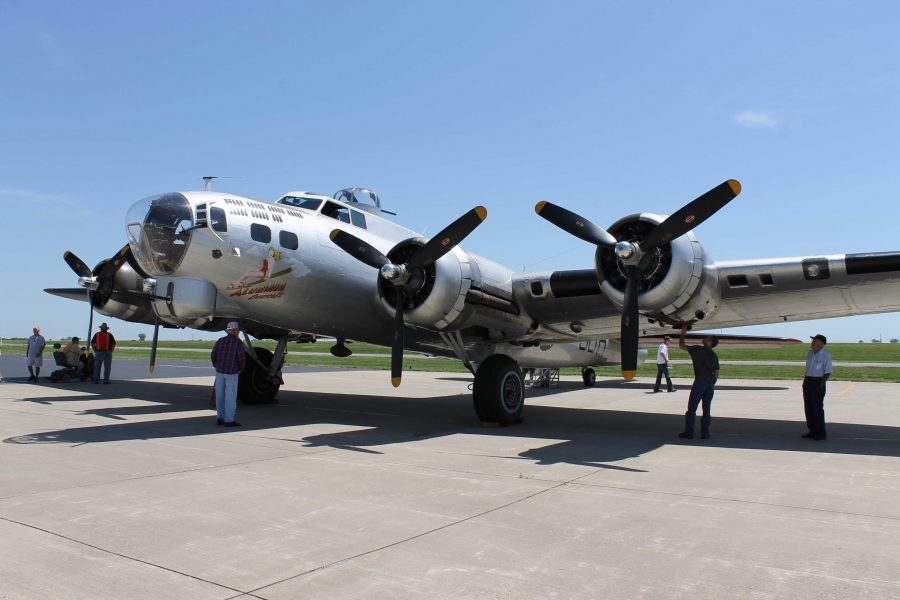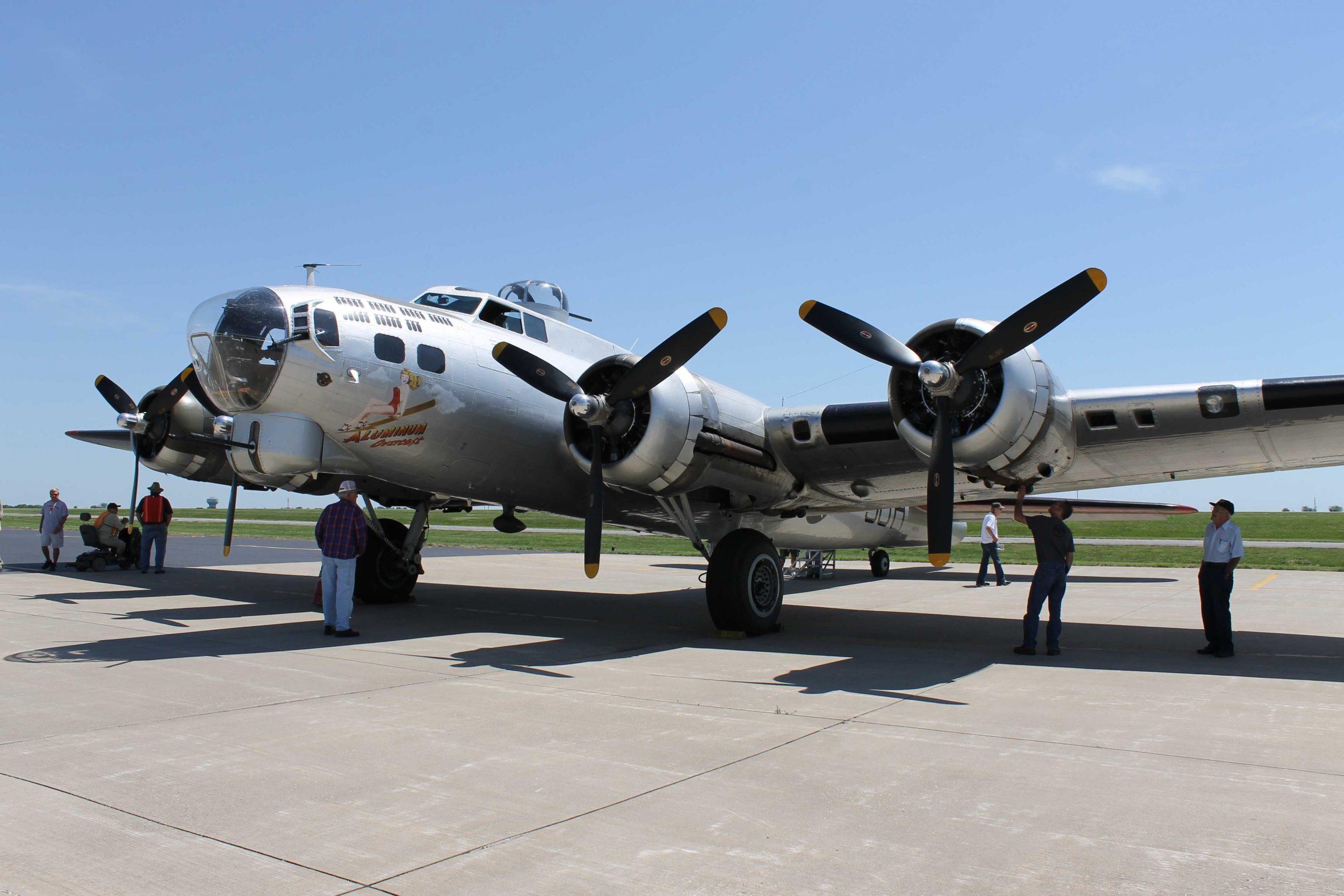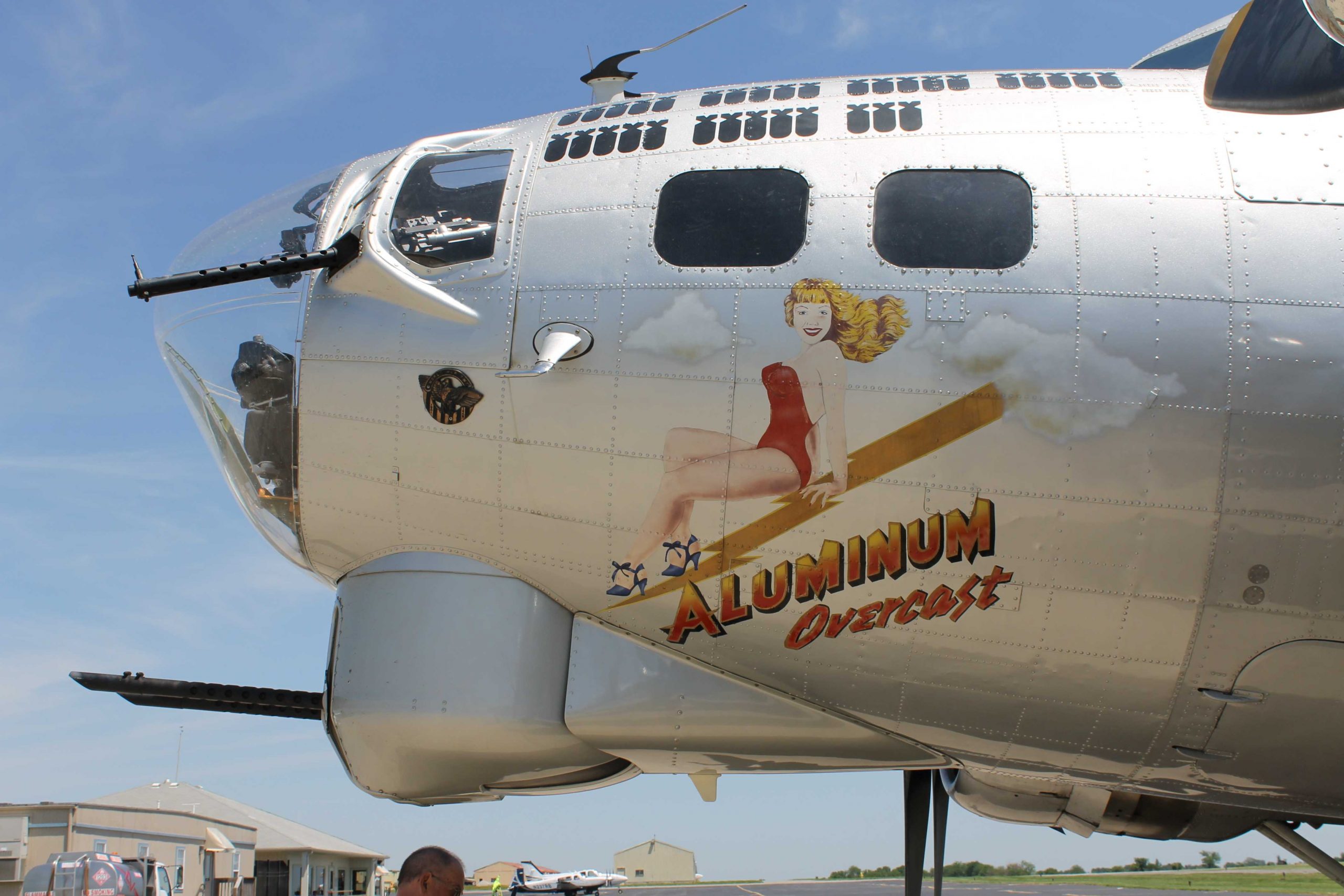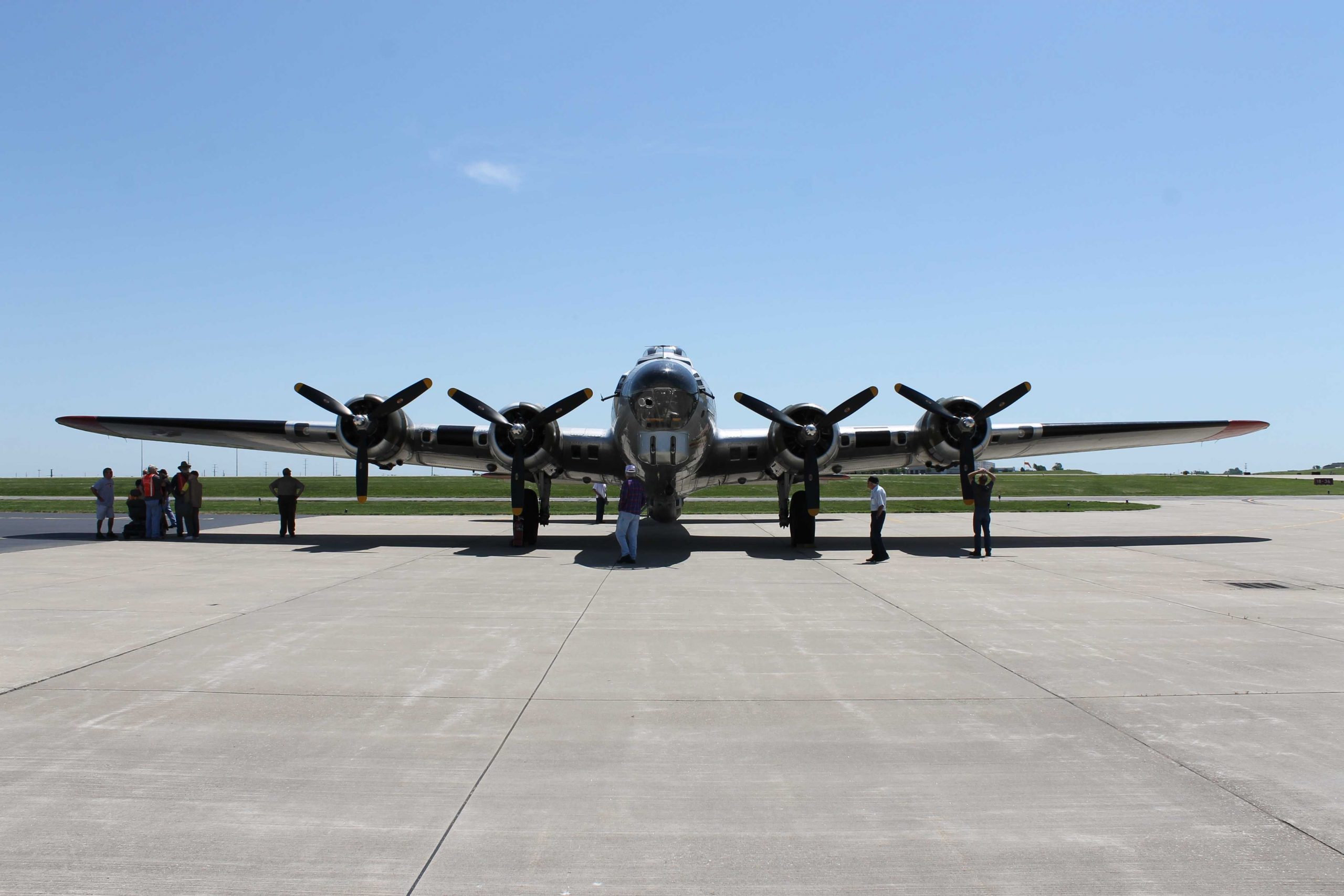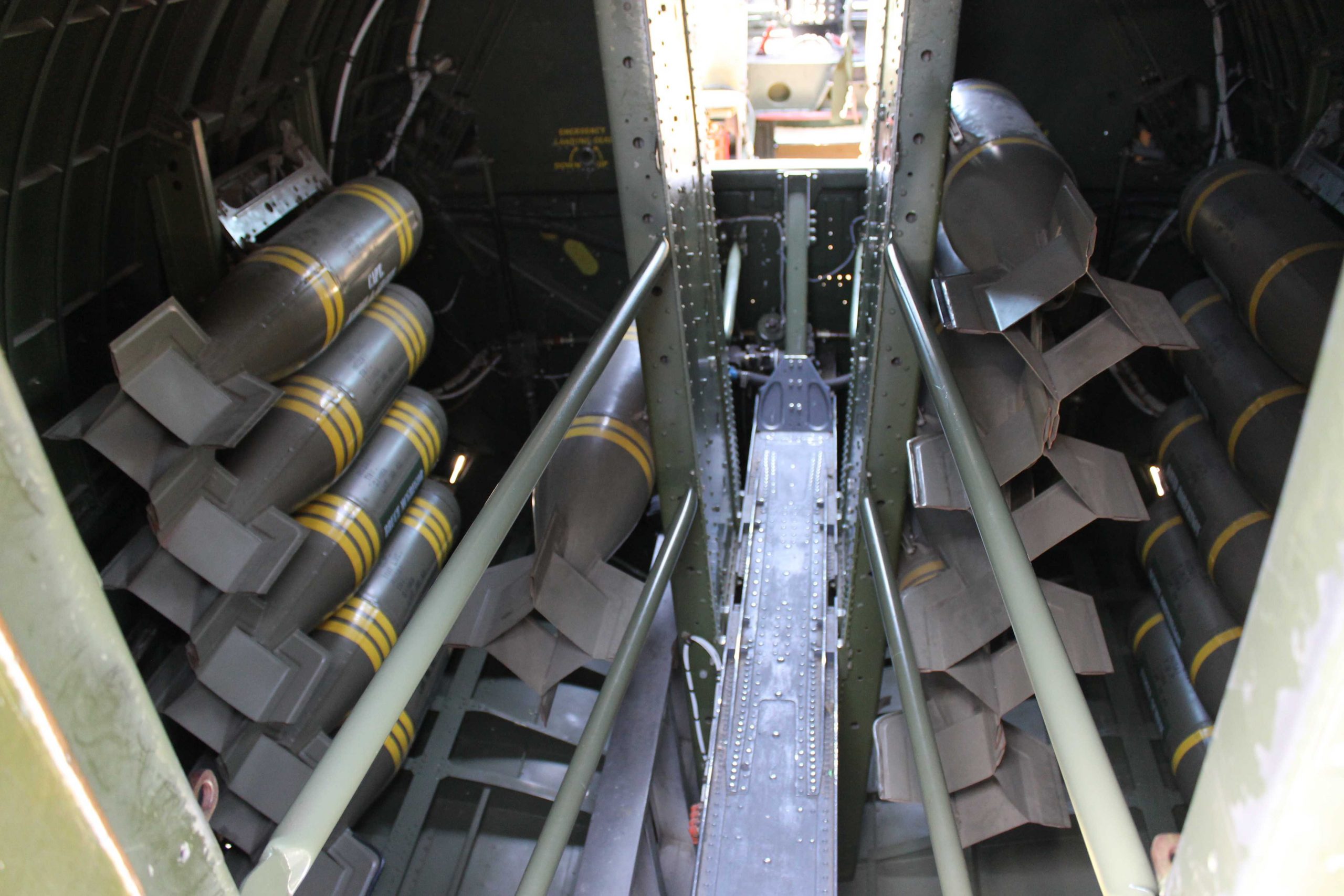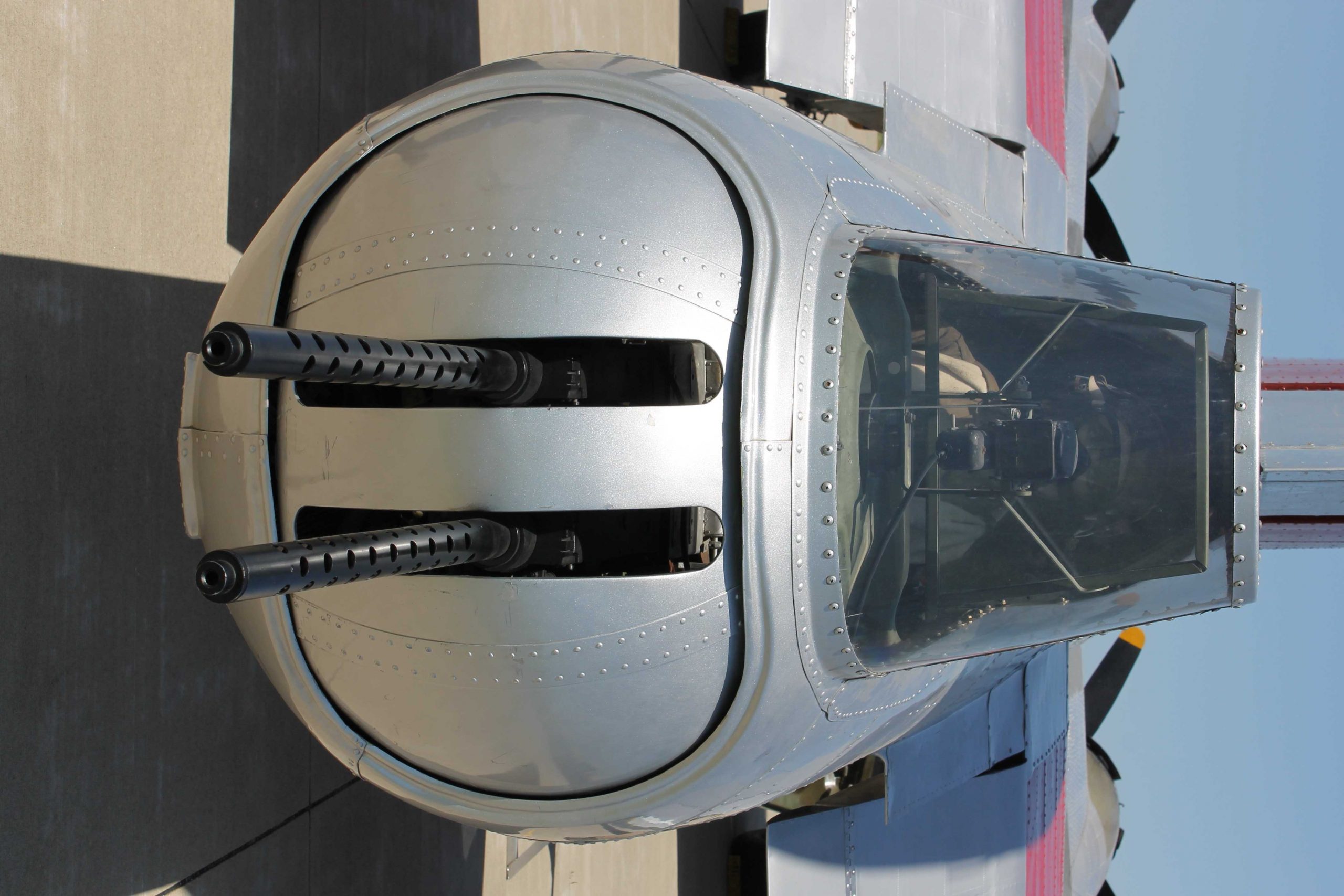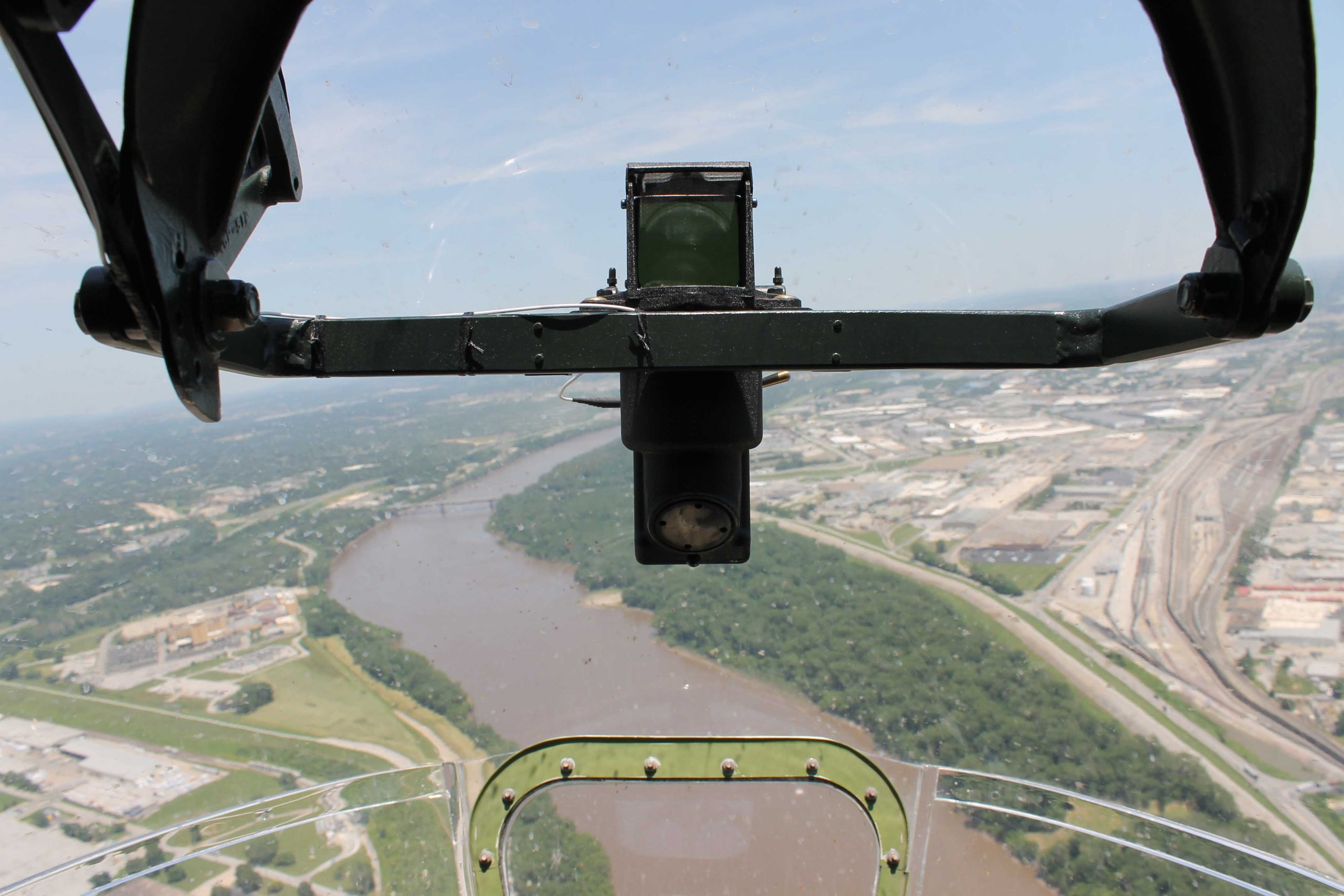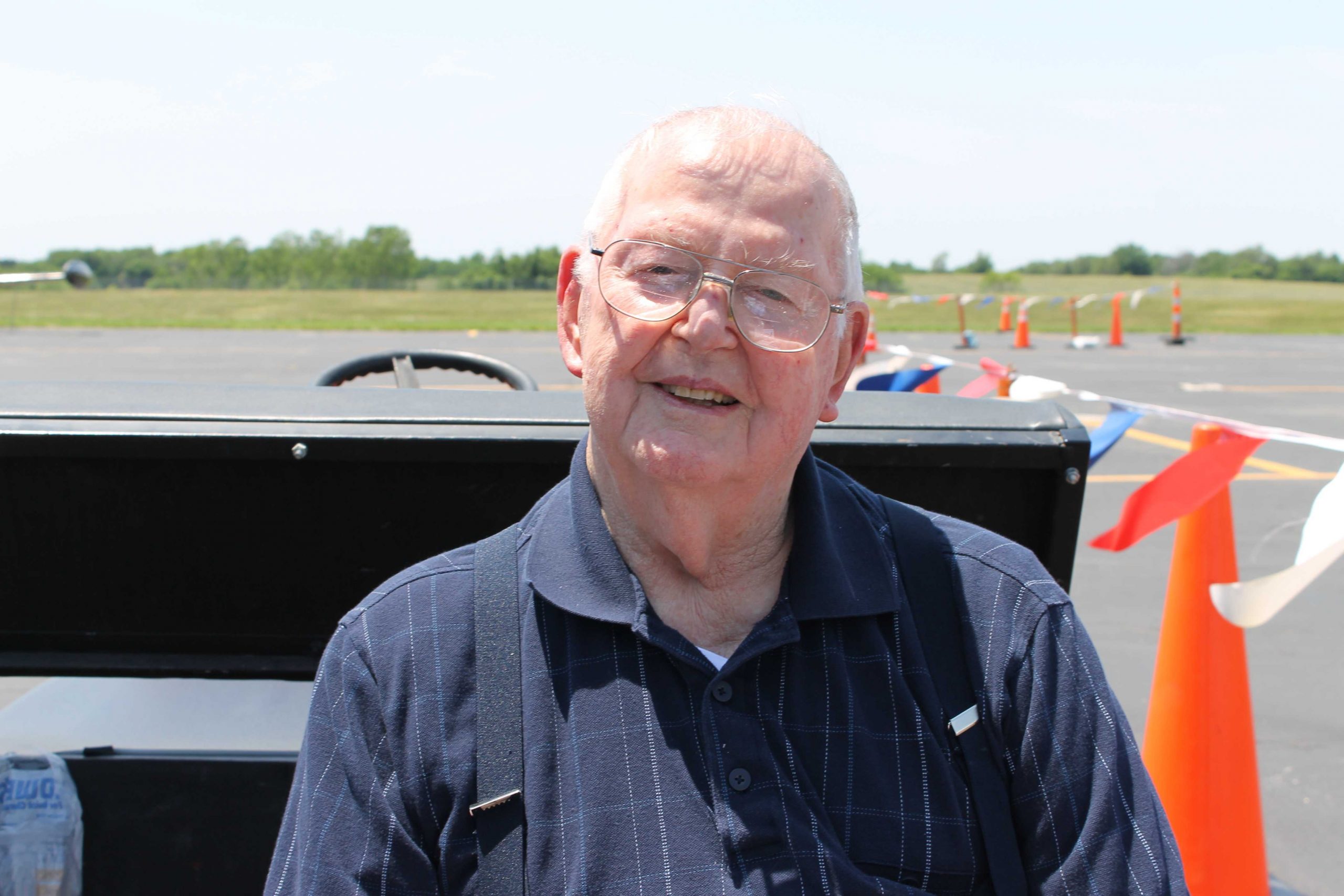Story and photos by ANDY LYONS (LEE’S SUMMIT, Mo., digitalBURG) – Every week, residents of Warrensburg can see the small T-38 Talon, Apache helicopters, A-10 Thunderbolts, and the B-2 Spirits in the skies over town. It isn’t every day that aircraft from the “can-do” era of World War II can be spotted.
There is a rare opportunity to take a ground tour or fly in one of the few B-17 “Flying Fortresses” still in service by visiting the Lee’s Summit Municipal Airport this weekend. The “Aluminum Overcast” is available for flights from 10 a.m.-2 p.m. and ground tours from 2-5 p.m. Friday through Sunday.
The plane landed at about noon Thursday and there were already people waiting to have a chance to see the craft. Among them was Raymond Winburn, a resident of Lee’s Summit and retired mechanic from the Army Air Corps. He worked on the engines of B-17s at an Army pilot training airfield in Roswell, N.M.
“It looks a lot bigger than I remember,” he said. “Seeing it surely brings back a lot of memories of when I was a boy.”
According to a brochure handed out by the Experimental Aircraft Association, which owns the “Aluminum Overcast” and organizes the tour, the B-17 was dubbed the “Flying Fortress” by a Seattle newspaper because of its defensive firepower. The airplane was given increased horsepower compared to other World War II aircraft, which allowed it to operate at faster speeds.
Other improvements included the addition of a heavier armament, including 13 .50-caliber machine guns, larger self-sealing fuel tanks and a radically altered rear section that provided greater stability at high altitudes and made room for a tail-gun position.
The “Aluminum Overcast” was delivered to the U.S. Army Air Corps on May 18, 1945. It was too late to see action in World War II, and the plane was stripped of military equipment and declared surplus, according to a brochure on the plane’s history. It has since been sold multiple times and used as a high-altitude camera platform and survey aircraft. The plane logged more than 1 million hours performing mapping operations over nine countries.
Since then the plane has had several uses, and in 1981 it was donated to the EAA Aviation Foundation and has appeared in numerous air shows and aviation events all over the country. It is currently painted in the colors of the 398th Bomb Group, commemorating a B-17G that was shot down on its 34th combat mission over Le Manior, France, on Aug. 13, 1944.
Local media were invited to take a flight around the Kansas City downtown area Thursday. Meredith Whillock, the maintenance officer, said it costs more than $6,000 per hour to fly the plane.
He also gave some of the history of B-17s in World War II, stating that the popular saying “the whole nine yards” wasn’t a football moniker. Instead, it came about when the waistgunners, the men who armed the machine guns at the midsection of B-17s, fired all 27 feet of ammunition in the belt, or “gave them the whole nine yards.”
There was one special guest aboard the media flight — Bob Belzer, a radioman on a Catalina during World War II. The Catalina is a seaplane with a bottom crafted like the hull of a boat. It was used for search-and-rescue missions as well as to spot enemy ships and submarines. Belzer was stationed in Jacksonville, Fla., and his six-man crew patrolled the East Coast in search of enemy submarines.
Belzer said that ever since the war, he has been a fan of World War II aircraft and flying in a B-17 was on his bucket list. As the plane touched the ground during landing, to say his face lit up with joy would be an understatement.
Belzer leaned over and said, “This is the highlight of my life. I’m almost 87 years old and this is a dandy.”
A total of 12,731 B-17s were manufactured by Boeing and other companies. Most were delivered for service with the 7th and 8th Air Forces and others in every theater of World War II.
An EAA representative said there are about 12 of them still in service. Many are owned by museums and fly maybe once a year. He said he knew of six “Flying Fortresses” that do tours such as the one featured at the Lee’s Summit Municipal Airport.
For more information visit www.b17.org.
Andy Lyons is the managing editor of the University of Central Missouri newspaper, The Muleskinner. Follow him on Twitter at twitter.com/theLYON85.

